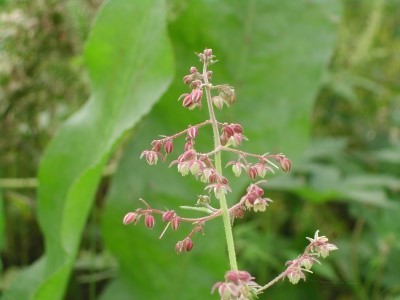Japanese hop
(Humulopsis scandens)

Description
Humulus japonicus, known as Japanese hop, is an ornamental plant in the family Cannabaceae. Some authorities have it as a synonym of Humulus scandens. Originally native to East Asian countries such as China, Japan, Korea, and extending its habitat to Vietnam, it was imported to North America in the late 19th century as an ornamental. Since its arrival in North America, it has spread widely. It can be found throughout the Northeastern U.S. and eastern Canada, and considered an invasive species in North America. It also features on the list of invasive alien species of Union Concern since 2019. This means it can no longer be imported in the European Union. Additionally, it has become illegal to plant it, breed it, transport it, or bring it into the wild in all Member States. Well-developed leaves with 5-9 lobes; abaxial surfaces of leaves pubescent, but not densely so; infructescence rarely longer than 2 cm, with bracts and bracteoles less than 1 cm long, and notable spinulose-ciliate Inflorescences: staminate inflorescences erect, 15–25 cm, flower anthers without glands; pistillate inflorescences spikes, conelike, ovoid; bracteole ovate-orbiculate, 7–10 mm, pilose, margins densely ciliate-hairy. Infructescences pendulous, green, conelike, ovoid to oblong, (1-)1.5-3(-4) cm; bracteoles without yellow glands. Seeds germinate in early spring, but plants may continue to emerge if conditions are favorable. Seeds can be dispersed by number of agents including humans, animals, machines, and flood waters. Humulus japonicus is native temperate parts of Asia (China, Japan, Korea, Taiwan and the Russian Far East) and the tropical environment of Vietnam and Laos, but has become an invasive species in North America since it was imported in the late 19th century. The plant has been immensely successful in North America, and is found throughout eastern Canada and the eastern half of the United States, and considered a invasive species. In the United States Humulus japonicus has a lateral range from Nebraska/North Dakota to Maine and a vertical range from Minnesota to Georgia. Japanese hops grow well given plentiful sunlight, moisture, and nutrient rich soil, and are most commonly found along stream banks and floodplains. Japanese hops do not grow as well in shaded areas and drier soils. In milder climates, it can survive the winter.
Taxonomic tree:







